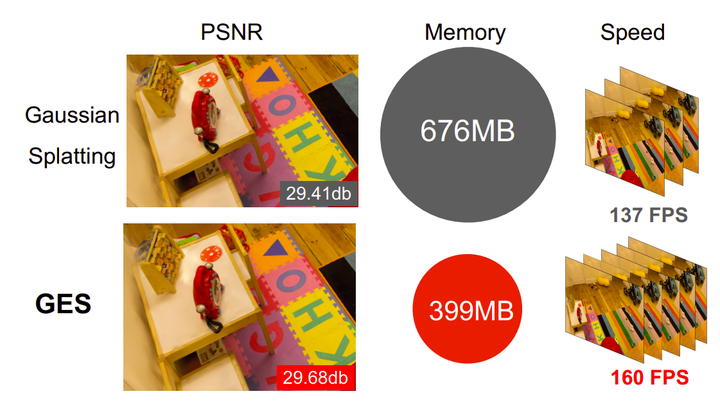GES: Generalized Exponential Splatting for Efficient Radiance Field Rendering

Abstract
Advancements in 3D Gaussian Splatting (GS) have significantly accelerated 3D reconstruction and generation. However, it may require a very large number of Gaussians, which can become a substantial memory footprint. This paper introduces GES (Generalized Exponential Splatting), a novel representation that employs Generalized Exponential Function (GEF) to model 3D scenes, requiring far fewer particles to represent a scene and thus significantly outperforming Gaussian Splatting methods in efficiency with a plug-and-play replacement ability for Gaussian-based utilities. GES is validated theoretically and empirically in both principled 1D setup and realistic 3D contexts. It is shown to more accurately represent signals with sharp edges, which are typically challenging for Gaussians due to their inherent low-pass characteristics of the Gaussian function.Our empirical analysis demonstrates that GEF outperforms Gaussians in fitting natural-occurring signals (e.g. squares, triangles, parabolic signals), thereby reducing the need for extensive splitting operations that increase the memory footprint of Gaussian Splatting. With the aid of a frequency-modulated loss, GES achieves competitive performance in novel-view synthesis standard benchmarks while requiring less than half the memory storage of Gaussian Splatting.